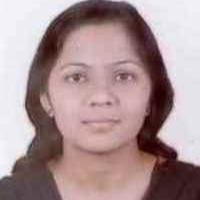International Journal of Intelligent Systems and Applications (IJISA)
IJISA Vol. 6, No. 3, 8 Feb. 2014
Cover page and Table of Contents: PDF (size: 269KB)
Acoustic Signal Classification from Monaural Recordings
Full Text (PDF, 269KB), PP.62-68
Views: 0 Downloads: 0
Author(s)
Index Terms
Speech/Music Signals, Speech/Music Classification Model, Segmentation
Abstract
Acoustic domain contains signals related to sound. Speech and music though are included in this domain, both the signals differ with various features. Features used for speech separation does not provide sufficient cue for music separation. This paper covers musical sound separation for monaural recordings. A system is proposed to classify singing voice and music from monaural recordings. For classification, time and frequency domain features along with Mel Frequency Cepstral Coefficients (MFCC) applied to input signal. Information carried by these signals permit to establish results Quantitative experimental results shows that the system performs the separation task successfully in monaural environment.
Cite This Paper
Rupali Shete, "Acoustic Signal Classification from Monaural Recordings", International Journal of Intelligent Systems and Applications(IJISA), vol.6, no.3, pp.62-68, 2014. DOI:10.5815/ijisa.2014.03.06
Reference
[1]Yipeng Li, DeLiang Wang. Separation of Singing Voice from Music Accompaniment for Monaural recordings. IEEE Transactions on Audio, Speech, and Language Processing. v15, n4, May, 2007, pp.1475- 1487.
[2]Benaroya, L. Bimbot F., and Gribonval R. Audio source separation with a single sensor. IEEE Transactions on Audio, Speech, and Language Processing.v14, n1, January, 2006, pp.191-199.
[3]Ozerov A, Philippe P., Bimbot, F., Gribonval, R. Adaptation of Bayesian models for single-channel source separation and its application to voice/music separation in popular songs. IEEE Transactions on Audio, Speech, and Language Processing.v15, n5, July, 2007, pp.1066-1074.
[4]Ellis,D.P.W.2006. Model-based scene analysis. In: Wang, D. L., Brown, G. J.(Eds.),Computational Auditory Scene Analysis: Principles, Algorithms, and Applications Wiley/IEEE Press, Hoboken, NJ, pp. 115-146.
[5]McAulay,R.,Quatieri,T. Speech analysis/synthesis based on a sinusoidal representation. IEEE Transactions on Acoustics, Speech, and Signal Processing.v.34,n4, 1986. pp.744-754.
[6]Davy, M., Godsill, S.Bayesian harmonic models for musical signal analysis. Seventh Valencia International meeting Bayesian Statistics 2002.
[7]Virtanen,T. Sound source separation in monaural music signals. Ph.D. thesis, Tampere University of Technology. 2006.
[8]Every,M. R., Szymanski, J. E. Separation of synchronous pitched notes by spectral filtering of harmonics. IEEE Transactions on Audio, Speech, and Language Processing v14, n1, 2006, pp.91-98.
[9]Casey,M. A., Westner, W.,Separation of mixed audio sources by independent subspace analysis. International Computer Music Conference, 2000.
[10]Brown,G. J., Cooke, M. P. Computational auditory scene analysis, Computer Speech and Language. IEEE Transactions on Neural Networks v8, n2, 1994, pp.297-336.
[11]Abdallah,S. A. Towards music perception by redundancy reduction and un-supervised learning in probabilistic models. Ph.D. thesis, King's College London, Department of Electronic Engineering 2002.
[12]Brown,J. C., Smaragdis, P.Independent component analysis for automatic note extraction from musical trills. Journal of the Acoustical Society of America 115, 2004, pp.2295-2306.
[13]Rabiner,L.and Juang,B.H. Fundamentals of Speech Recognition.Englewood. Cliffs, NJ:Prentice-Hall,1993.
[14]Ainsworth,W. A. Speech Recognition by Machine London : Peter Peregrinus Ltd., 1988.
[15]Muthusamy, Y.K., Barnard, E. and Cole, R.A. Reviewing Automatic Language identification. IEEE Signal Processing Magazine,v11, n4, October, 1994, pp 33-41.
[16]Ladefoged, P. Elements of Acoustic Phonetics. Chicago IL, USA: University of Chicago Press, 1st ed, 1962.
[17]Fry, D. B. The Physics of Speech, Chicago, IL, USA: Cambridge University Press, 1979.
[18]Simon, J.C. Spoken Language Generation and Understanding. Proceedings of the NATO Advanced Study Institutes Hingham, MA, USA: D. Reidel Publi.Co., 1980.
[19]Backus, J. The Acoustical Foundations of Music. W.W.Scranton, Pennsylvania, U.S.A.: Norton& Company, 2nded. 1977.
[20]Wu M., Wang D. L, and Brown G. J, A multipitch tracking algorithm for noisy speech. IEEE Transactions on Speech Audio Process v11, n3, May, 2003, pp. 229–241.
[21]Berenzweig A. L. and Ellis D. P. W. Locating singing voice segments within music signals. In IEEE Proceedings of the WASPAA,2001, pp.119-122.
[22]Maddage N. C., Xu C., and Wang Y. A SVM-based classification approach to musical audio. In Proceedings of the ISMIR, 2003.
[23]Berenzweig A. L., Ellis D. P. W., and Lawrence S. Using voice segments to improve artist classification of music. In Proceedings of AES 22nd International Conference on Virtual, Synthetic and Entertainment Audio, 2002.
[24]Kotnik B., Vlaj D.,and Horvat B. Efficient noise robust feature extraction algorithms for distributed speech recognition (DSR) systems. International Journal of Speech Technology, v6, n3, 2003, pp.205–219.
[25]Kedem B. Spectral analysis and discrimination by zero crossings. Proceedings of the IEEE. v74, n11, 1986, pp.1477–1493.
[26]Bakus J. The Acoustical Foundations of Music. W. W.Norton & Company,Pennsylvania, Pa, USA, 2nd ed.1997.
[27]Rongqing H. and Hansen J. H. L. Advances in unsupervised audio classification and segmentation for the broadcast news and NGSW corpora, IEEE Transactions on Audio, Speech and Language Processing, v14, n3, 2006, pp. 907–919.
